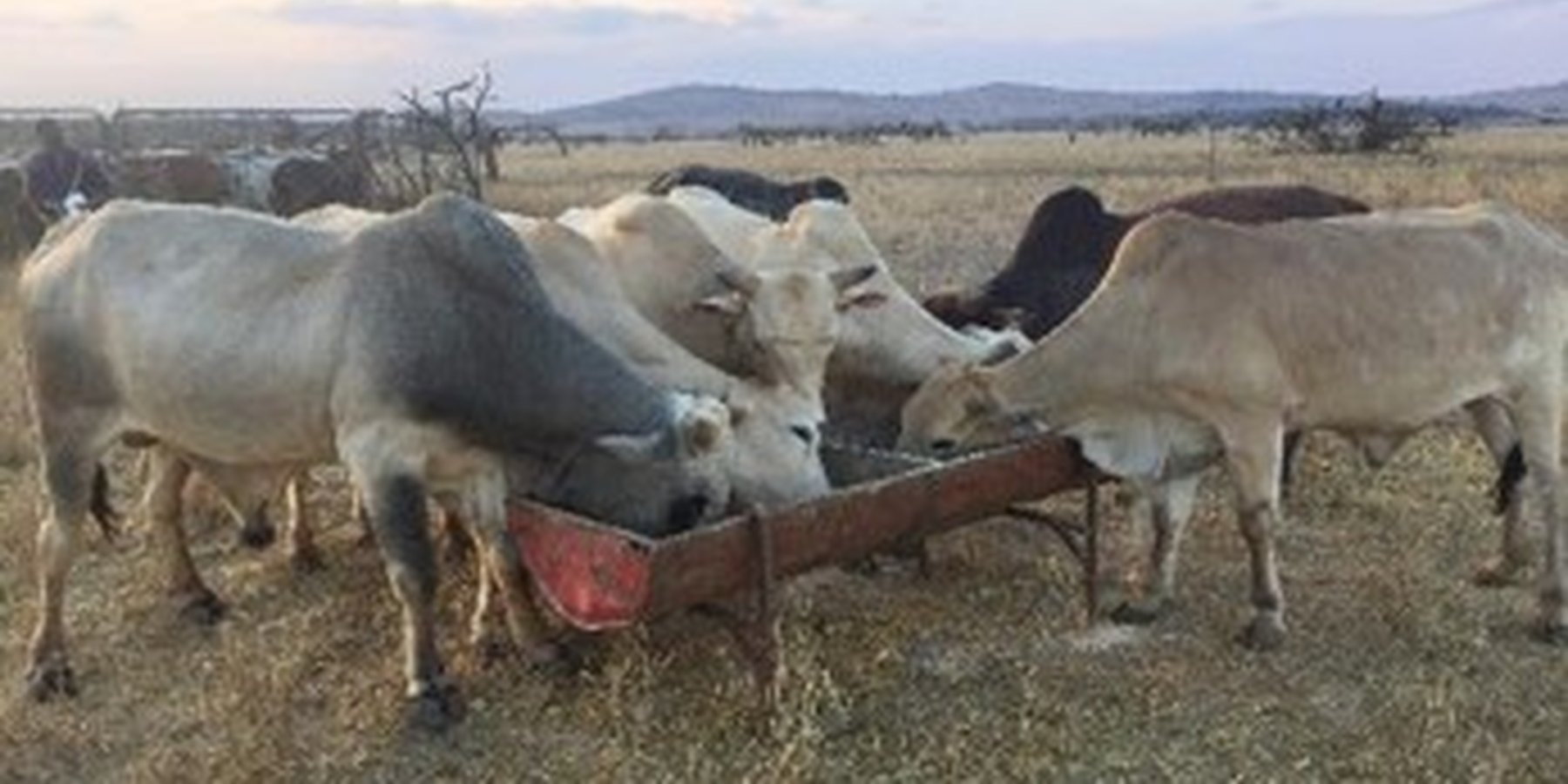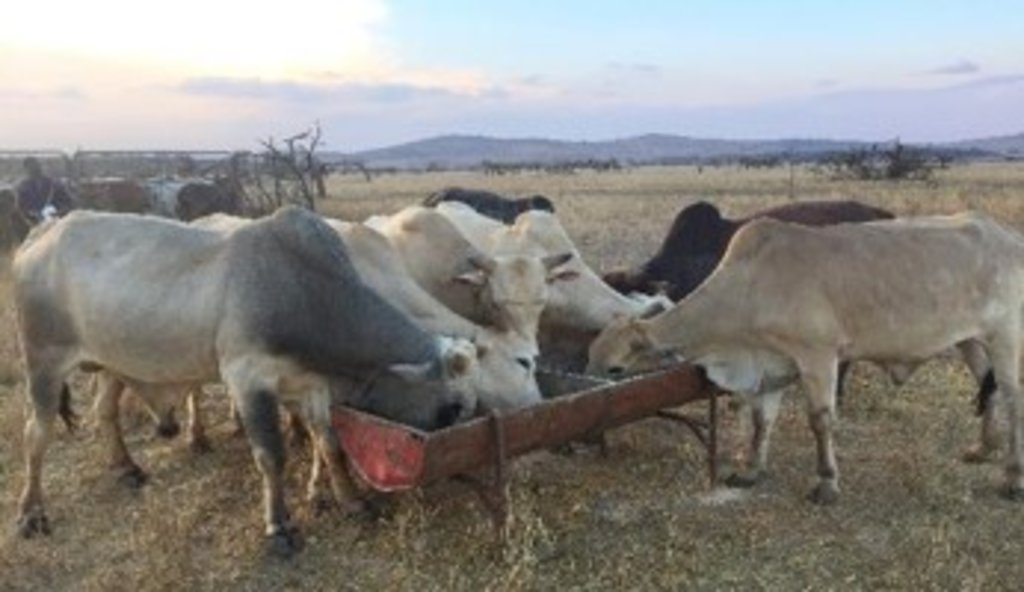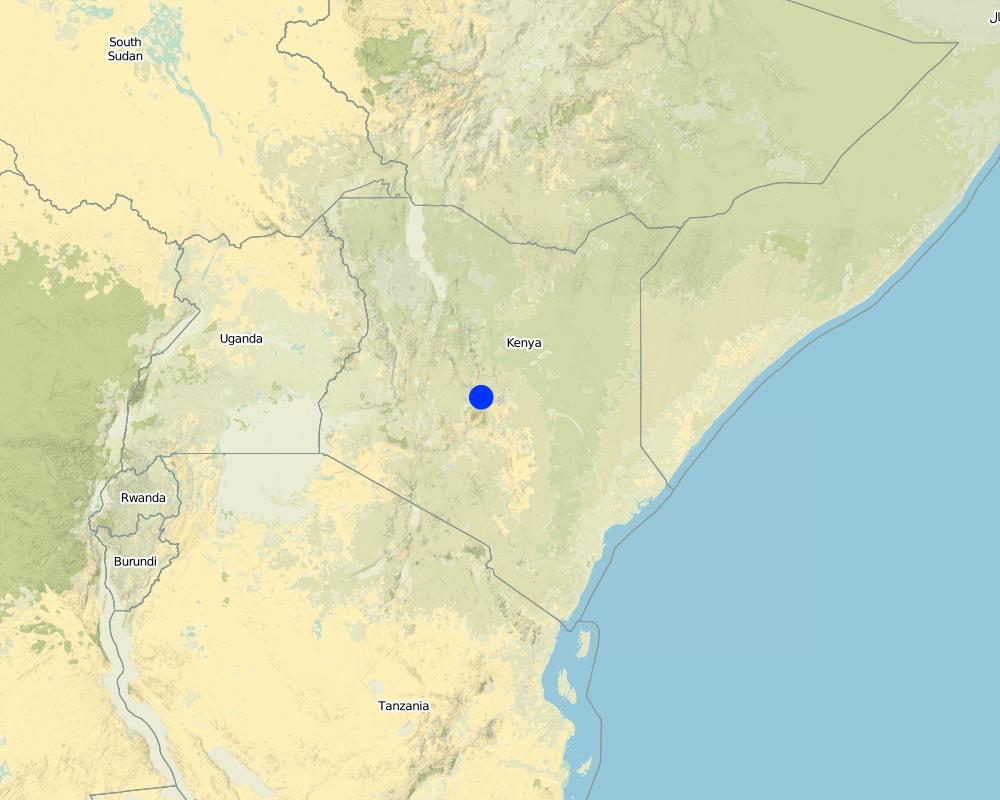Northern Rangelands Trust - Livestock to Markets [Kenya]
- Creation:
- Update:
- Compiler: Peter Tyrrell
- Editor: –
- Reviewer: Rima Mekdaschi Studer
approaches_3435 - Kenya
- Full summary as PDF
- Full summary as PDF for print
- Full summary in the browser
- Full summary (unformatted)
- Northern Rangelands Trust - Livestock to Markets: Okt. 10, 2018 (public)
- Northern Rangelands Trust - Livestock to Markets: Sept. 3, 2018 (inactive)
- Northern Rangelands Trust - Livestock to Markets: Okt. 6, 2018 (inactive)
- Northern Rangelands Trust - Livestock to Markets: Mei 24, 2018 (inactive)
- Northern Rangelands Trust - Livestock to Markets: Junie 5, 2018 (inactive)
- Northern Rangelands Trust - Livestock to Markets: April 27, 2018 (inactive)
View sections
Expand all Collapse all1. General information
1.2 Contact details of resource persons and institutions involved in the assessment and documentation of the Approach
Key resource person(s)
Patrick Ekodere:
Kenya
Name of project which facilitated the documentation/ evaluation of the Approach (if relevant)
Book project: Guidelines to Rangeland Management in Sub-Saharan Africa (Rangeland Management)1.3 Conditions regarding the use of data documented through WOCAT
When were the data compiled (in the field)?
13/03/2018
The compiler and key resource person(s) accept the conditions regarding the use of data documented through WOCAT:
Ja
2. Description of the SLM Approach
2.1 Short description of the Approach
Northern Rangeland Trust works across the rangelands of northern Kenya to improve market access to pastoral communities across 20,000 km2. The program improves local revenue generation, incentives to reduce herd size, and channels funding into improved rangeland management across the conservancies.
2.2 Detailed description of the Approach
Detailed description of the Approach:
The Northern Rangelands Trust (NRT) is a non profit organisation established in 2004. It works with communities to develop community conservancies, to transform peoples lives, secure peace and conserves natural resources in northern Kenya. NRT works cross 20,000 km2, with 33 conservancies.
NRT established NRT Trading to identify, incubate, and pilot, and scale sustainable business across the NRT conservancies. The help to incubate and run business that encourages conservation ethics, while improving livelihoods.
The Livestock to Market Program (LTM) was established in 2006 as a partnership between NRT, NRT affiliated conservancies, and two private conservancies - Ol Pejeta and Lewa. The program was funded by Flora and Fauna International and The Nature Conservancy. The program was designed to: to build resilient livelihoods for local pastoralists through providing a local, equitable, reliable, fair market for a large number of cattle; provide incentives to increase production viability of cattle, reduce herd size and avoid losses during droughts; build conservation momentum; directly benefit individual conservancies through sale levies.
The model works to first buy cattle from NRT affiliated conservancies, these cattle are sold on weight and grade, and tries to embrace a more market-driven approach. Once bough cattle is quarantined and vaccinated on Lewa. They are then fattened and sold on to different markets depending on size and age.
The program aims to benefit local people through providing an equitable market with similar or better rates than available and through revenue generation for each conservancy - to provide health and education benefit. A key goal of this benefit system is through channeling conservancy levies and behavioral change into improved rangeland management. Improved management, implemented by conservancies, will lead to improved productivity of the rangelands, increased livestock quality, increased revenue for pastoralists, and ultimately contribute to the goals of NRT - Peace and security; resilient livelihoods; productive rangelands; stable wildlife; and growing enterprise.
NRT has a fully fledged grazing management team working across the conservancies to enhance pasture and land management is upheld by all members, this working by involving alienation of dry season and wet season grazing corridors in order to guarantee animal –wildlife sustainable grazing. Several technologies are implemented under this approach to improve rangeland management. Strategic destocking and cattle bunching in conservancies is one method. Supplementary feed is also provided to increase the weight gain of cattle before sale.
2.3 Photos of the Approach
2.5 Country/ region/ locations where the Approach has been applied
Country:
Kenya
Region/ State/ Province:
Baringo, Garissa, Isiolo, Laiikipia, Meru, Samburu, Turkana and Lamu Counties
Map
×2.6 Dates of initiation and termination of the Approach
Indicate year of initiation:
2006
Comments:
In 2014 NRT spun off its commercial activities into a stand alone social enterprise, Northern Rangelands Trading Ltd (NRT Trading).
2.7 Type of Approach
- project/ programme based
2.8 Main aims/ objectives of the Approach
Assist pastoralists and families in the NRT Conservancies to build resilient livelihoods by providing a local, equitable, reliable, fair market for large numbers of cattle.
Provide incentives to pastoralists to manage cattle for ready markets and over time reduce herd sizes to avoid loses due to drought among other factors, in an effort to improve rangeland health and productivity.
Gain conservation leverage by linking market access to conservation outcomes.
Directly benefit Conservancies through purchase and sale levies.
Involve a complete value chain model i.e. involving pastoralist producers, disease control actors & quarantine, designated fattening ranches, slaughter, and marketing.
2.9 Conditions enabling or hindering implementation of the Technology/ Technologies applied under the Approach
social/ cultural/ religious norms and values
- hindering
Pastoral societies do not necessarily have cattle for revenue generation, and they currently do not manage cattle for weight and the beef market.
availability/ access to financial resources and services
- enabling
The spread of Mpesa (Mobile Money) is helping to improve the ability for people to share money across the region.
- hindering
Lack of funding to support disease control in the conservancies, especially those which may hinder the movement and sale of livestock. e.g FMD.
institutional setting
- enabling
collaboration/ coordination of actors
- hindering
Certain value chain operations are hindered by the lack of cohesion between country and national government. This includes disease control and taxes.
land governance (decision-making, implementation and enforcement)
- hindering
There are challenges in implementing improved grazing management across many of the conservancies due to a lack of ability to enforce.
knowledge about SLM, access to technical support
- hindering
High costs of technical expertise needed to upscale grazing and land management.
other
- hindering
The region is insecure and hinders the impact and effectiveness of the program.
3. Participation and roles of stakeholders involved
3.1 Stakeholders involved in the Approach and their roles
- local land users/ local communities
27 community conservancies
Land-owners and managers of cattle. They benefit from the sale of cattle through LTM and implement the grazing management plans.
- SLM specialists/ agricultural advisers
NRT - Grazing management team
Provide technical advise to conservancies to improve grazing management.
- NGO
Sidai
Sidai is working with community conservancies by selling drugs. LTM purchases some basic veterinary drugs from Sidai outlets.
- local government
County Government
Extension services for livestock management and disease control. Beneficiaries of county levies.
3.2 Involvement of local land users/ local communities in the different phases of the Approach
| Involvement of local land users/ local communities | Specify who was involved and describe activities | |
|---|---|---|
| initiation/ motivation | interactive | NRT conservancy model creates independent units that have strong leadership and governance structures. These conservancy boards and management are involved and are the drivers at each stage. |
| planning | interactive | Conservancies are involved in planning stages. |
| implementation | external support | NRT-LTM runs the markets and livestock fattening with support from both local and private conservancies. |
| monitoring/ evaluation | passive | Monitoring is done through the NRT monitoring systems. |
3.3 Flow chart (if available)
3.4 Decision-making on the selection of SLM Technology/ Technologies
Specify who decided on the selection of the Technology/ Technologies to be implemented:
- all relevant actors, as part of a participatory approach
Explain:
The NRT grazing management teams work with the community conservancies officials and board to establish grazing management plans and implement restoration of degraded rangelands.
Specify on what basis decisions were made:
- evaluation of well-documented SLM knowledge (evidence-based decision-making)
- personal experience and opinions (undocumented)
4. Technical support, capacity building, and knowledge management
4.1 Capacity building/ training
Was training provided to land users/ other stakeholders?
Ja
Specify who was trained:
- land users
If relevant, specify gender, age, status, ethnicity, etc.
NRT governance department conducts effective leadership and management training to conservancy leadership across the board.
Form of training:
- public meetings
4.2 Advisory service
Do land users have access to an advisory service?
Ja
Specify whether advisory service is provided:
- on land users' fields
Describe/ comments:
Some support is provided by county government extensions services. NRT also provides support.
4.3 Institution strengthening (organizational development)
Have institutions been established or strengthened through the Approach?
- yes, greatly
Specify the level(s) at which institutions have been strengthened or established:
- local
Describe institution, roles and responsibilities, members, etc.
Community conservancies have gained funding to implement projects and strengthened their knowledge on livestock production systems and rangeland management.
Specify type of support:
- financial
- capacity building/ training
4.4 Monitoring and evaluation
Is monitoring and evaluation part of the Approach?
Ja
Comments:
Monitoring and evaluation are annually conducted through the mandatory annual statutory audit by contracted reputable audit firms.
Internal production monitoring is done through the monthly internal tracking systems.
If yes, is this documentation intended to be used for monitoring and evaluation?
Nee
4.5 Research
Was research part of the Approach?
Ja
Specify topics:
- economics / marketing
Give further details and indicate who did the research:
The research formed the basis of choosing to scale up the programme and recommendations to run the programme as a business.
5. Financing and external material support
5.1 Annual budget for the SLM component of the Approach
Comments (e.g. main sources of funding/ major donors):
The program is supported by a loan from The Nature Conservancy, that is repayable in 10 years.
5.2 Financial/ material support provided to land users
Did land users receive financial/ material support for implementing the Technology/ Technologies?
Ja
If yes, specify type(s) of support, conditions, and provider(s):
Financial support comes in the form of improved livestock markets.
5.3 Subsidies for specific inputs (including labour)
- none
5.4 Credit
Was credit provided under the Approach for SLM activities?
Nee
5.5 Other incentives or instruments
Were other incentives or instruments used to promote implementation of SLM Technologies?
Nee
6. Impact analysis and concluding statements
6.1 Impacts of the Approach
Did the Approach empower local land users, improve stakeholder participation?
- No
- Yes, little
- Yes, moderately
- Yes, greatly
Through the strengthening of community conservation.
Did the Approach help land users to implement and maintain SLM Technologies?
- No
- Yes, little
- Yes, moderately
- Yes, greatly
Provide financial incentives and technical support from NRT.
Did the Approach mobilize/ improve access to financial resources for SLM implementation?
- No
- Yes, little
- Yes, moderately
- Yes, greatly
Through financing of conservancy operation which supports governance, security and conservation programs ($80,000 over 4 years).
Did the Approach improve knowledge and capacities of land users to implement SLM?
- No
- Yes, little
- Yes, moderately
- Yes, greatly
Yes through the outreach from NRT grazing management team.
Did the Approach build/ strengthen institutions, collaboration between stakeholders?
- No
- Yes, little
- Yes, moderately
- Yes, greatly
Strengthen ties between community conservancies, NRT and private conservancies.
Did the Approach empower socially and economically disadvantaged groups?
- No
- Yes, little
- Yes, moderately
- Yes, greatly
Empower marginalized pastoralists through the provision of $1,982,210 over 4 years in income to 14,864 families.
Did the Approach lead to improved food security/ improved nutrition?
- No
- Yes, little
- Yes, moderately
- Yes, greatly
Through financial provision to pastoral people.
Did the Approach improve access to markets?
- No
- Yes, little
- Yes, moderately
- Yes, greatly
This created regional livestock markets with 5630 cattle bought over 4 years.
6.2 Main motivation of land users to implement SLM
- increased production
There is an increasing shift towards a production focused livestock industry in pastoral areas.
- increased profit(ability), improved cost-benefit-ratio
This system provides an opportunity for community members to benefit from reliable prices at markets.
- reduced land degradation
This project works with community conservancies to prevent and reduce land degradation, which has become a widespread problem in the north of Kenya. This is done through the implementation of new grazing systems, strengthening resource governance, and restoring degraded areas through reseeding and bush clearing.
6.3 Sustainability of Approach activities
Can the land users sustain what has been implemented through the Approach (without external support)?
- no
If no or uncertain, specify and comment:
NRT - Trading is a central actor in the LTM system, and controls the purchasing and movement of cattle, and manages the finances of the sales. The landowners do not purchase, fatten or sell livestock, they rely on NRT.
6.4 Strengths/ advantages of the Approach
| Strengths/ advantages/ opportunities in the land user’s view |
|---|
| Access to a reliable, close, and equitable weight and grade based market for cattle. |
| Opportunities to restore and prevent landscape degradation through funding provided to communities, support from NRT, and through the shift towards higher quality beef, which requires improved rangeland management to meet demands. |
| Funding for community projects through conservancies. |
| Strengths/ advantages/ opportunities in the compiler’s or other key resource person’s view |
|---|
| Strengthening institutions of grazing management, which should improve the ability to implement sustainable rangeland management technologies. |
| Creating a shift to a production based focus on livestock management, which should increase livestock quality, and the underlying rangeland productivity. |
6.5 Weaknesses/ disadvantages of the Approach and ways of overcoming them
| Weaknesses/ disadvantages/ risks in the land user’s view | How can they be overcome? |
|---|---|
| Unfair or inequitable pricing of livestock. | Clarity on revenue sharing from NRT - Trading. Prices per weight and grade clear and fair. |
| Some pastoralists do not want to sell cattle, and are not motivated by increasing revenue through market-based systems. |
| Weaknesses/ disadvantages/ risks in the compiler’s or other key resource person’s view | How can they be overcome? |
|---|---|
| Lack of ownership and participation in the NRT LTM may isolate community members and create friction over finances and project ownership. | |
| Land and resources on the fattening ranches are limited and land invasions have complicated this. |
7. References and links
7.1 Methods/ sources of information
- compilation from reports and other existing documentation
Websites, power-point presentations, and conversations with NRT staff.
7.3 Links to relevant information which is available online
Title/ description:
NRT - LTM Website
URL:
http://www.nrt-kenya.org/livestock/
Links and modules
Expand all Collapse allLinks
No links
Modules
No modules






